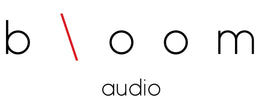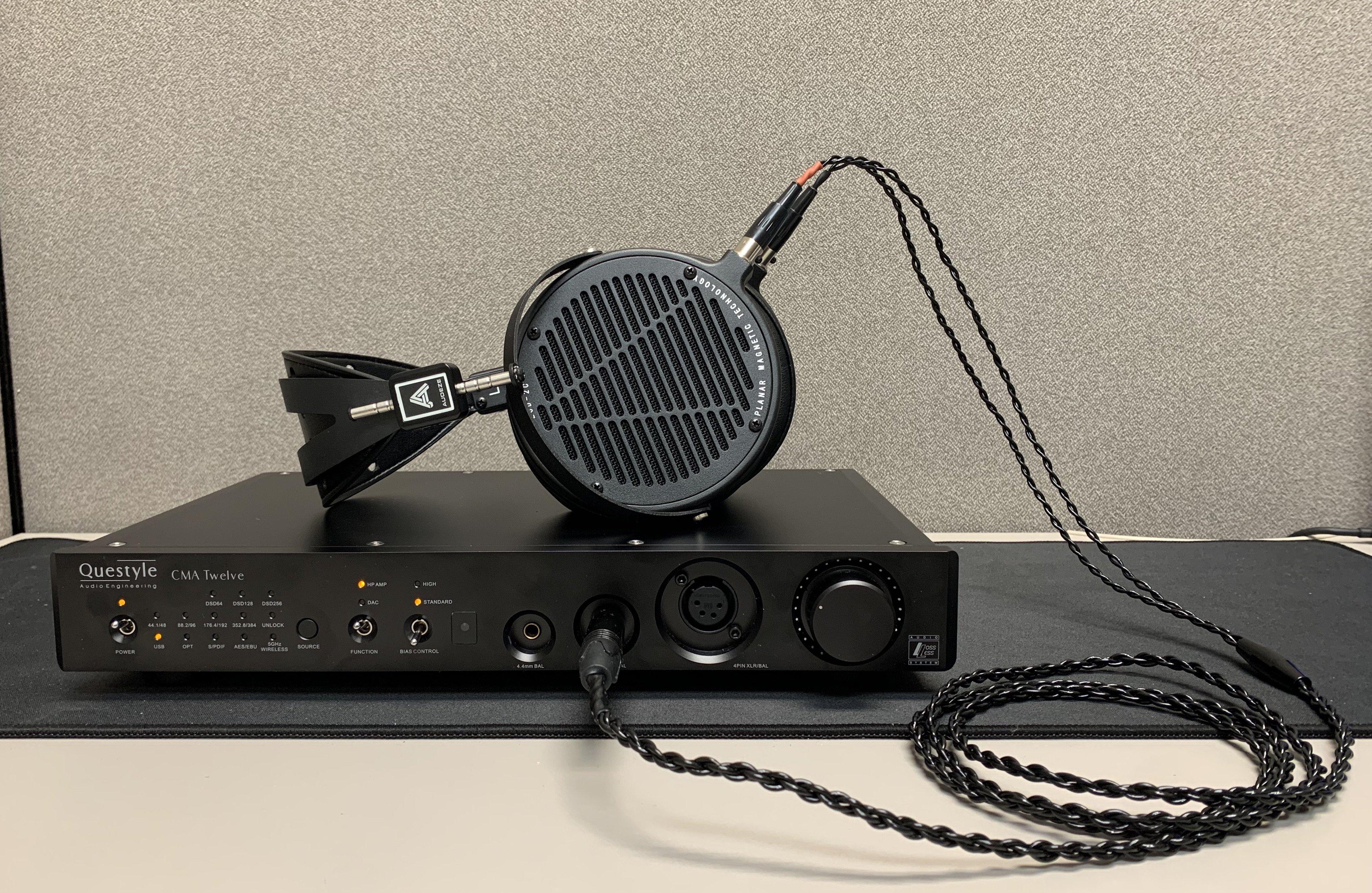The headphone that started it all for Audeze – the LCD-2 – has received a number of updates and upgrades since 2008. The LCD-2 Classic is an attempt to roll back all the new tech, like the Fazor elements, and recreate the original LCD-2 sound. So how does this blast from the past hold up?
The Build and Design
If you’ve ever seen or worn a pair of Audeze cans before, then you probably have a good idea of what you’re in for with the LCD-2 Classic. There are big, vented, metal earcups, with large ear pads that completely cover your ears. Pretty much the entire construction is made of aluminum and stainless steel, and it stays on your head with Audeze’s patented suspension system. The headphones are heavy, coming in at over one pound, but I found them to be generally comfortable. The LCD-2 Classic is visually more like the LCD-X than the standard LCD-2, with straight black aluminum all around, rather than the wood-trimmed design of the rest of the LCD lineup.
The standard package is fairly barebones, with just the headphones and a cable snugly packed in a white box. The cable is quite good, with simple black rubber wrapped strands and OCC copper conductors. It’s generally flexible and tangle resistant. Of course, the barebones package is part of what makes headphones of this quality available at a $799 price point – leaving the choice to the customer as to whether they want to spend a little more on the case or other extras.
The Sound
The LCD-2 Classic’s sound is generally characterized by a balanced, neutral response across the frequency spectrum, with a wide soundstage and a strong sense of impact in the low end. The imaging is good, though not quite holographic, while the sense of separation is excellent with very little feeling bleeding or congestion between instrumental parts.
The bass is definitely one of the highlights of the LCD-2 Classic. It’s punchy but honest. The LCD-2 presents with linear bass, and it is going to find whatever bass is in your recording, and present it with power and impact. There’s a great sense of texture in the low end, and the strong sense of separation comes into play here as well. The bass, and the transition from bass to midrange is often where you get hit with congestion or muddiness, but the LCD-2 Classic maintains a good sense of separation and clarity.
The mids, likewise are honest and, like the bass, quite linear, with a very strong, forward presentation of vocals. There’s excellent presentation of detail, and good layering of each instrument and part. The treble is generally on the smooth side, but not particularly rolled off. There’s a good sense of air, and a good balance to the treble. While it’s not quite as linear as the mids and bass, it’s generally neutral.
I’ve always considered the Audeze sound to be particularly strong for classic rock and metal, so for my listening, I started with some Black Sabbath, namely “Paranoid.” The persistent beat and driving bass on provide a deep throbbing in your ears that blends up into the thick chugging guitars. Ozzy’s voice feels somewhat distant but retains its urgency. The band is very well presented, with a good sense of the space around each member, and within that space, there’s a natural sense of blending from one instrument to the others. But if we’re being serious, usually when you’re blasting Sabbath in your headphones, it’s not about the subtle blending between layers of instruments, it’s about the powerful visceral energy of the band, and the LCD-2 Classic delivers that energy.
If you remember from a few paragraphs ago, I mentioned how one of the key characteristics of the LCD-2 Classic was its balance, and nothing is going to demonstrate that like moving from Black Sabbath to a Chick Corea solo piano performance. The same energy that went into delivering Tony Iommi’s muscular guitar riffs can also deliver the delicate dynamics and nuance of a solo piano performance. Listening to Corea performing pieces from Amadeus Mozart to Thelonious Monk, the LCD-2 Classic captures the intricate piano work, with clarity and precision. I sometimes exaggerate that the best headphones will let you hear a pin drop in the studio, but during a live performance of a Chopin Prelude, you could literally hear someone in the audience clear their throat very far back in the right channel. The LCD-2 Classic honestly surprised me with the level of detail and clarity it revealed here.
For something a bit more modern, on Twenty One Pilots “Level of Concern,” the LCD-2 Classic captures the colorful mix of pop, rock, and funk. The elements from funky guitars and staccato synth lines, to the deep kick drum and bassline are well layered, and delivered with palpable energy. As the landscape of the instruments shifts, the LCD-2 Classic captures the dynamics and keeps the layers cohesive through the busiest sections.
The LCD-2 Classic’s strong mids help deliver excellent vocals across genres and vocal styles. With “Shake it Off” by Florence + the Machine, the LCD-2 Classics deliver powerful lead vocals, and provide a strong sense of dynamics and space with the various overdubs and background vocals. The accompanying sort of pseudo-folk instrumentation is likewise thick and well-layered.
For my testing, I used the Questyle CMA Twelve, iBasso DX300, iFi micro iDSD Signature, and iFi iDSD Diablo. I found that to get the optimum bass slam, you really just need more power. On lower power sources, the LCD-2 Classic sounds good, but it lacks some of the impact. Give it some more juice and the low end really shines. As an example, using the iDSD Signature, even after matching the volume, there was a significant improvement in energy and physical dynamics after I switched from Normal to Turbo mode. The DX300 would be a solid mobile option as well, though I used the EQ to color in a little bit of the bass that was missing due to the power difference.
Comparison: HIFIMAN Ananda
If you’re looking for planar magnetic headphones in the $500-$1000 range, chances are some version of the Audeze LCD-2 and the HIFIMAN Ananda are on your list. Both are excellent headphones, but they’re also quite different, almost being complementary to each other, rather than competitive.
In terms of the build and physical properties of the headphones, the LCD-2 Classic looks and feels like the more premium of the two, and has the clear advantage in perceived quality, but the Ananda is the lighter of the two and may be more comfortable for many people. Personally, I don’t mind the extra weight, and prefer the feel of the Audeze suspension system and thick earpads to the Ananda, but for many people, the weight is too much.
In terms of sound, both have neutral, more linear tunings, but where the Ananda has a bit of an emphasis on the high end, with a significantly brighter sound, the LCD-2 Classic has the low end that really opens up with enough juice. The mids feel a bit thicker on the LCD-2 Classic as well, though both headphones provide superb detail and layering. In terms of soundstage and imaging, the Ananda has the larger soundstage, while the imaging feels a bit precise on the LCD-2 Classic.
Really, the LCD-2 Classic and Ananda represent, not a question of better or worse, but a question of preference and purpose. The LCD-2 Classic would definitely be my first choice for rock and more modern genres, while the Ananda would have the edge in classical music. The comfort issue is similar as well, with the Audeze suspension being preferable to some, while the lighter weight of the Ananda is preferable to others.
The Bottom Line
While it may not have all the latest in driver tech, the more than a decade old design of the Audeze LCD-2 Classic remains a top performer today, and its $799 price also makes it a tough value to beat. Put it all together, and the LCD-2 Classic isn’t just a great open back headphone, it’s a true benchmark for performance at its price point.








